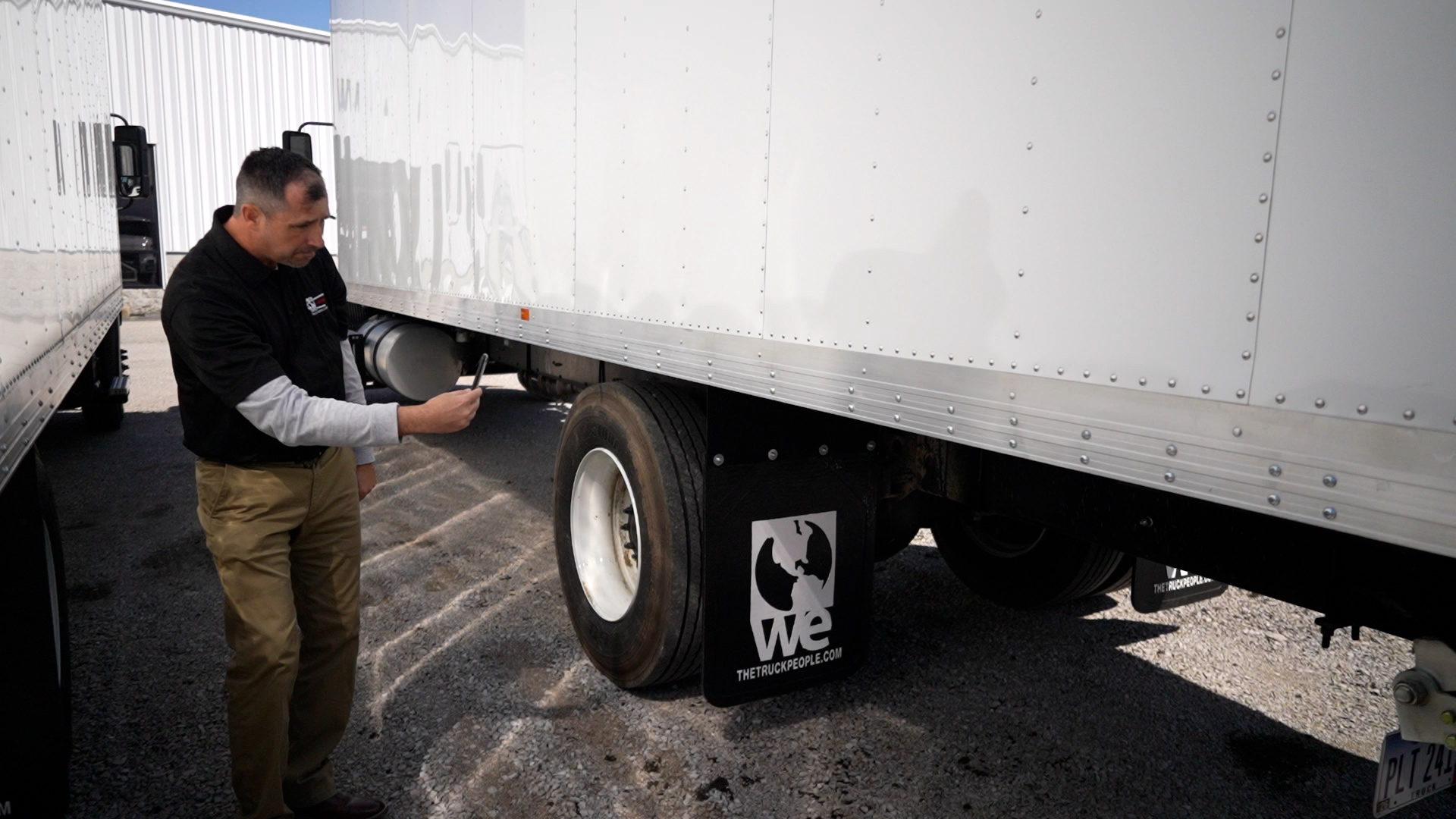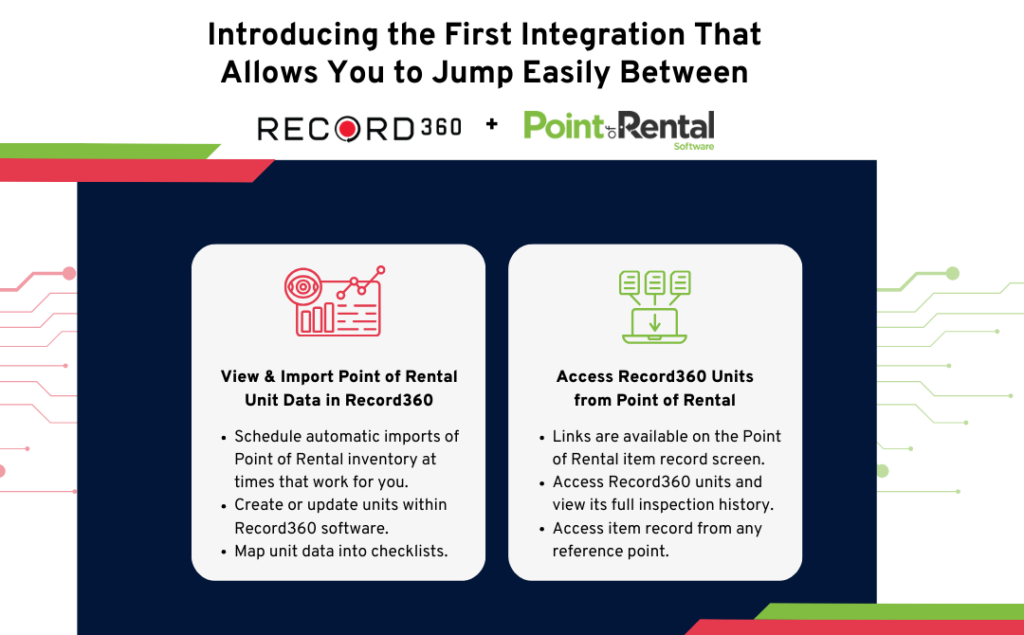Rev Up Your Fleet Management with Record360
A Fleet Inspection Form is a valuable document that allows fleet managers and maintenance technicians to assess the condition of a group of vehicles. It contains a checklist of inspection items that cover critical aspects of maintenance, such as vehicle components, safety equipment, and overall appearance.
By using the inspection form, potential issues can be identified and addressed promptly, ensuring the fleet’s safety and reliability. The form helps to pinpoint areas where preventative maintenance can be implemented to minimize the risk of future breakdowns or accidents.
The reason why an inspection form is so important is that it serves as a critical tool that enables fleet managers and maintenance technicians to maintain the optimal performance of the fleet.
A typical fleet inspection form may include items such as:
- Fluid levels (oil, coolant, brake fluid, etc.)
- Tire condition and pressure
- Brake system performance
- Lighting (headlights, taillights, turn signals, etc.)
- Steering and suspension components
- Electrical system (battery, alternator, etc.)
- Safety equipment (seat belts, airbags, etc.)
- Exterior appearance (paint, body damage, etc.)
Importance of Fleet Inspection Forms
There’s no question about it- fleet inspection forms are essential for any organization that manages a fleet of vehicles. The forms evaluate the vehicles’ condition and identify potential safety issues or maintenance needs. Conducting regular inspections and addressing any issues promptly, allows businesses to minimize risks, reduce costs, and improve performance.
A top priority when operating a fleet is ensuring the safety of drivers, passengers, and other road users. By identifying potential safety issues and addressing them promptly, fleet managers can prevent accidents and reduce the risk of injury or fatalities. Regular inspections can also help to identify areas where training may be necessary to improve driver safety.
Fleet inspections are necessary to ensure compliance with local, state, and federal regulations. Failure to comply with these regulations can result in fines, penalties, and legal liabilities. Conducting regular inspections ensures fleets remain in compliance with all applicable regulations, providing peace of mind.
Regular inspections can help to identify maintenance issues early, allowing fleet managers to address them before they become major problems. This can reduce repair costs and minimize downtime for vehicles. A well-maintained fleet can also operate more efficiently, resulting in lower fuel costs, improved vehicle performance, and increased productivity.
Efficiency is another important consideration for fleet managers. A well-maintained fleet operating efficiently can reduce costs and increase productivity. Regular inspections can help identify opportunities to improve efficiency, such as optimizing vehicle routes or identifying underutilized vehicles.
A fleet inspection program can help enhance a business’s reputation. Demonstrating a commitment to safety and professionalism can build trust with customers and improve the image of a company. This can be particularly important for businesses that rely on their fleet to provide customer services.
Must Read: Truck Inspection Checklist
Digitizing Fleet Inspection Forms
Digitizing Fleet Inspection Forms can provide significant benefits for companies that manage fleets of vehicles. By eliminating paper-based forms and adopting digital forms, companies can streamline operations, improve data accuracy, and reduce costs.
One of the benefits of digital forms is that they can be completed on a mobile device or tablet. The data is automatically captured and synced to a cloud-based system, saving time and reducing the risk of errors. Fleet managers can review inspection data in real time, regardless of their location.
Accessibility is another significant advantage of digital forms. Authorized personnel can access digital forms from anywhere, anytime, enabling remote collaboration and improving organizational communication. This is especially important for companies with multiple locations or remote teams. By using digital forms, team members can easily share information and collaborate on issues as they arise.
Another critical benefit of digitizing fleet inspection forms is standardization, ensuring all inspections are completed consistently. Standardization makes it easier for fleet managers to compare data across different vehicles or locations.
Reporting is also significantly improved with digital forms. The data captured by digital forms can be analyzed and visualized in real-time. Digital forms can also be used to generate automated reports, which can help to expedite decision-making and improve overall efficiency.
Digitizing fleet inspection forms can lead to cost savings. Companies can reduce administrative costs and improve operational efficiency by eliminating paper forms, manual data entry, and storage. Digital forms can also help reduce the risk of errors or omissions, leading to costly maintenance issues or legal liabilities.
Must Read: Commercial truck inspection mistakes you need to avoid
Record360 is Your Best Option for a Digital Fleet Inspection Form
Record360 is a comprehensive solution for digital inspections that provides a range of benefits for companies managing fleets of vehicles. One of the primary advantages of using Record360 is that it is a solution for digital inspections. It provides tools and features that enable companies to capture, manage, and share inspection data across their organization. This can streamline operations and improve efficiency, allowing fleet managers to focus on other critical tasks.
Another key advantage of using Record360 is its ease of use. The mobile app is user-friendly and intuitive, with an interface that enables users to complete inspections quickly and efficiently. This can save time and reduce the risk of errors or omissions, improving overall accuracy and data quality.
Record360 also offers customizable forms, allowing companies to create inspection forms tailored to their needs. This ensures that all inspections are completed consistently and that the data captured is relevant and actionable. Using custom forms, companies can also capture more detailed data and better track performance metrics over time.
Real-time reporting is another significant benefit of Record360. The platform provides real-time reporting capabilities that enable fleet managers to track inspection data and identify trends or patterns. Reports can be generated quickly, providing valuable insights into the health and performance of the fleet. This can help managers make data-driven decisions about maintenance and repair needs and identify opportunities to optimize fleet performance.
Integrations are an essential part of successful fleet management software. Record360 allows for seamless data transfer and improves overall efficiency. All data is captured and managed in a centralized location. This makes it easier to analyze and act upon, providing fleet managers with the information they need to optimize fleet performance.
Record360 provides enhanced security features, including data encryption, user access controls, and audit trails. This helps to protect against data breaches and unauthorized access, ensuring that sensitive data remains secure.
Record360 is a comprehensive solution for digital inspections that provides a range of benefits for companies managing fleets of vehicles. It is easy to use, customizable and provides real-time reporting capabilities that enable fleet managers to make data-driven decisions about maintenance and repair needs. By using Record360, companies can optimize their fleet performance and achieve their business goals more efficiently.




